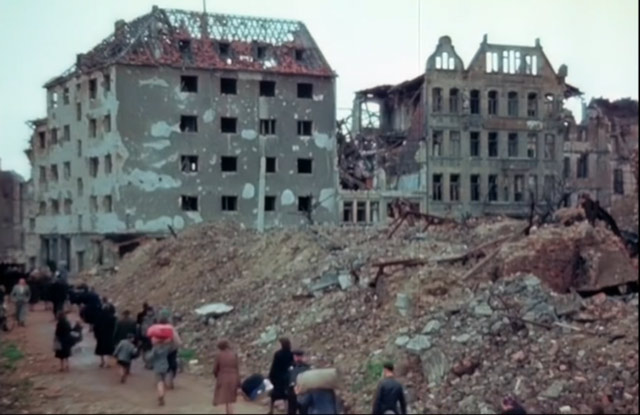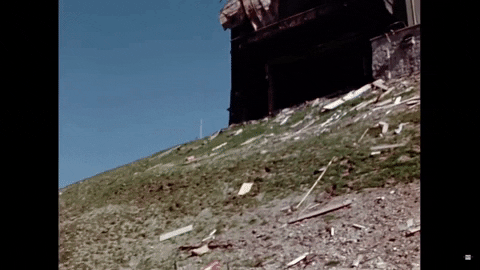Life Amidst the Rubble
 |
| Germany in 1945. |
The war damage in Germany was insane. The devastation in Germany by the war's conclusion was immense. It was so immense that it's difficult to grasp. Fortunately, the U.S. Army made a point of documenting the destruction wrought by six years of war so that we don't have to just imagine it, but we can actually see it.
The RAF bombed Berlin several times early in the war with scattered success. Some bombs hit the opera house that Adolf Hitler treasured, angering him. He rebuilt it and vowed to defend the city better. As losses mounted, Bomber Command concentrated more on other targets that were nearer and not as well defended. This was a smart strategy, but it left Berlin largely intact until a change in tactics in November 1943 saw a full-scale assault on the city. After that, the city disintegrated rapidly.
 |
| This was a popular German postcard before World War II showing Hitler's Berghof in Berchtesgaden. |
Using the best equipment available, director George Stevens led a team of the U.S. Army Signal Corps that filmed the German cities that had been torn apart by years of bombing raids and last-ditch fighting. Stevens was no slouch, having already directed some Ginger Rogers/ Fred Astaire films and directed dozens of from 1930 onward.
 |
| Hitler's Berghof shortly after the defeat. |
Having broken into the film business as a cameraman, Stevens had a good eye for composition. This was perfect training for recording bombed-out buildings and people struggling to rebuild them. The experience had a big effect on Stevens' later work. His post-war films showed a noticeable shift, becoming more pointed and dramatic as opposed to his romantic comedies of the pre-war endeavors. He went on to new heights after the war, directing "A Place in the Sun" (1951) and "Giant" (1956) among other enduring works. Directing religious epic "The Greatest Story Ever Told" (1965) showed just how much Stevens' mindset had changed.
There also were other filmmakers involved in recording the aftereffects of the war. These included, for instance, Capt. Oren Haglund (USAAF) of the 1st. Motion Picture Unit, who captured the dramatic footage of the "lost German girl" I've written about before. But Stevens had the good fortune to be in the right places at the right time to capture the best images of the overall devastation.
Berlin 1945
Let's hope this never has to happen again!
2021

No comments:
Post a Comment